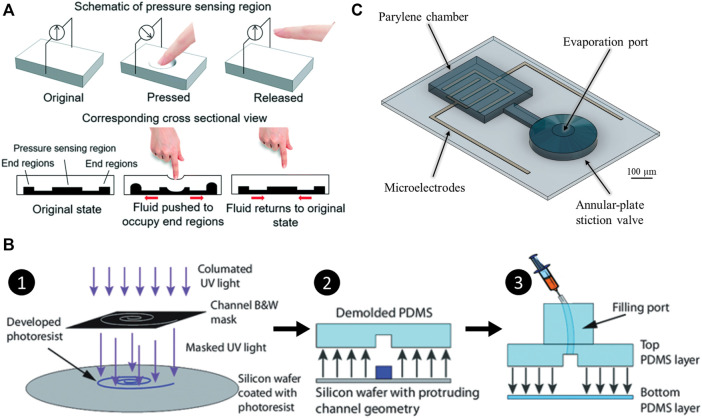FIGURE 4.
Microfluidic tactile sensing. (A) Working principle of microfluidic force sensing where the applied force induces a deformation of the elastomer and causes the liquid to flow inside the microchannels (Yeo et al., 2016b). Published by The Royal Society of Chemistry (RSC). (B) Manufacturing steps for microfluidic tactile sensors: First, a photolithography process is used to pattern extrusions on a silicon wafer coated with a photoresist, and treatment with the developer solution eliminates the non-exposed photoresists. Next, the elastomer is poured over the patterned silicon wafer, resolving microchannels on the soft layer when demolded. Lastly, an additional bottom layer is added to seal the channel, and a working liquid is injected into the microchannels through a filling port (Codd et al., 2014). Reprinted with permission. Copyright Patrick J. Codd. (C) Concept of the impedance-based microfluidic tactile sensor with an electrolyte-filled microchamber forming the sensing unit and an in-line stiction valve for liquid encapsulation (Gutierrez and Meng, 2010).

